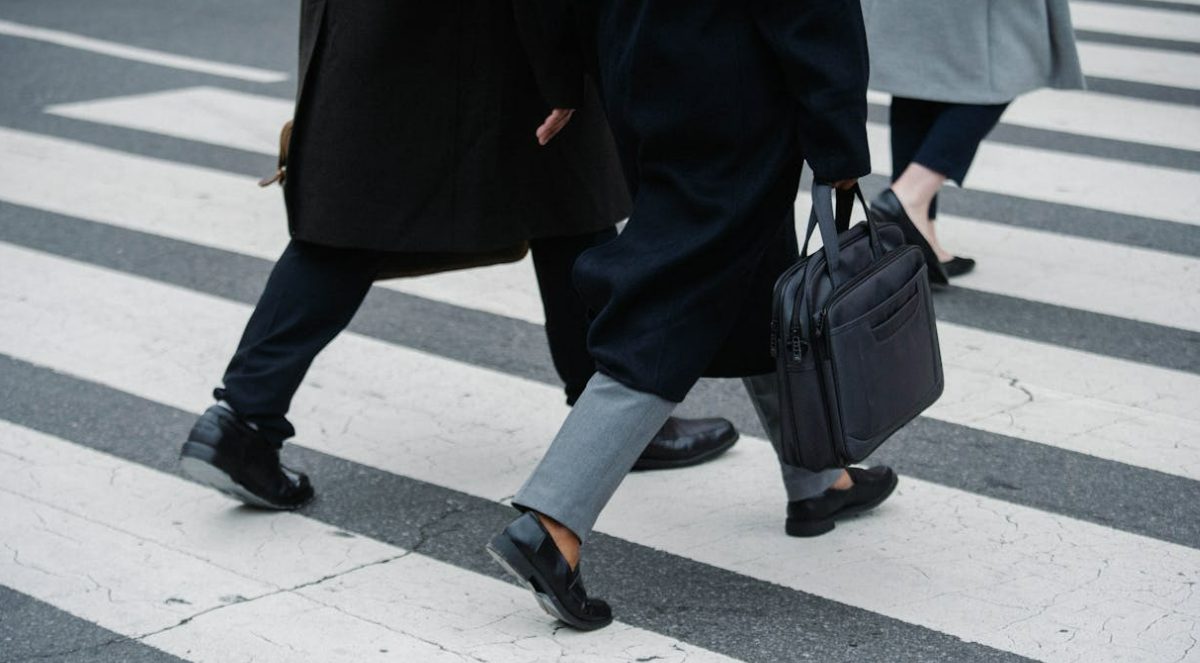
With growing concern over the environmental impact of vehicle pollution, alternative travel methods become more popular. However, despite the health and environmental benefits of cycling and walking, these modes of transportation are not without risk.
Take walking along roadways and through intersections, for instance. Sadly, vehicle accidents involving pedestrians sometimes result in serious injuries and can be fatal.
If you or a loved one has been injured in a pedestrian accident in Nebraska, the personal injury lawyers at Hauptman, O’Brien, Wolf & Lathrop can help. Call us today at (402) 241-5020 for a free consultation.
Situations That Pose a High Risk for Pedestrian Accidents
While accidents can happen anywhere, certain areas and factors pose a higher risk for pedestrians. These include:
- When the driver is unable to see the pedestrian
- Crossings at unmarked crosswalks
- Driving under the influence of drugs or alcohol
When the driver doesn’t see the pedestrian
Many pedestrian accidents happen when something prevents the driver from seeing the pedestrian.
Reasons for this can include:
- Time of day: While the sun rises and sets, sunlight can especially impact a driver’s vision. The angle of a lower sun coming in through the windshield can “blind” a driver, making him or her unable to see a pedestrian.
- Distractions: Sometimes, a driver cannot see a pedestrian because he or she is distracted. When a driver is on the phone, talking with a passenger, or focused on the movements of other vehicles, he or she can fail to notice pedestrians on the road.
- The pedestrian’s attire: A pedestrian’s clothes can make it difficult for a driver to notice him or her, especially at night. For example, wearing dark clothing or lacking reflectors can be dangerous.
- Obstructed view: At times, a physical object can obstruct the driver’s view. Limited visibility can happen at a poorly designed intersection, where objects such as street signs or bus stations can block a driver’s view.
When the pedestrian isn’t crossing at a marked crosswalk
Marked crosswalks are designed to alert drivers to the presence of pedestrians. If someone is jaywalking or crossing in an area without a crosswalk, the driver may not expect the pedestrian’s presence.
A common danger on Omaha roads is unmarked crosswalks, which are high-risk areas for pedestrians. Although it is the correct area for a pedestrian to cross, drivers do not have visible signs to help them be aware of the presence of any potential pedestrians.
When the driver is under the influence of drugs or alcohol
Of course, drivers who are under the influence of drugs or alcohol are more likely to get into an accident. Not only are impaired drivers less aware of their environment, but their reaction time is also severely limited, increasing their risk of potential accidents.
When the pedestrian is under the influence of drugs or alcohol
When a pedestrian is under the influence of drugs or alcohol, his or her movements can be erratic and dangerous. Lowered inhibitions can cause impaired pedestrians to engage in reckless behavior, such as crossing the street suddenly and without looking for vehicles.
When Intersections Are Not Designed With Pedestrians in Mind
In some cases, high-risk areas for pedestrian accidents are caused by poor design. The United States Federal Highway Administration (FHWA), a division of the Department of Transportation (DOT), publishes reports and guides designed to increase awareness and offer suggestions to improve road safety.
The FHWA’s guide on intersection improvements for pedestrians and bicyclists sets out 3 principles for improving safety:
- Expecting pedestrians and bicyclists at all intersections
- Using a safe system approach
- Providing access for all ages and abilities
Expecting pedestrians at each intersection
The DOT guide encourages intersection projects to include space for sidewalks, crossings, and appropriate traffic controls to accommodate for pedestrian use. Additional factors can impact pedestrian safety, such as signal timing, bus stop placement, and the presence of vehicle turn lanes.
Use a Safe System approach
The Safe System approach analyzes factors such as traffic control, speed management techniques, and geometric features to mitigate conflicts and crashes. Road Safety Audits can be used to identify potential conflicts and improve an existing intersection.
Provide access for all ages and abilities
To ensure pedestrian safety, roads and intersections must be easily accessible by everyone, including individuals with disabilities. These can include individuals who have vision, mobility, hearing, or cognitive disabilities.
The DOT encourages the use of certain features to improve accessibility including:
- Sidewalks
- Crosswalks
- Pedestrian refuge islands
- Traffic signals and beacons
Omaha and Lincoln Pedestrian High-Risk Areas
Omaha has seen some recent improvements to increase pedestrian safety. For example, “Baby Bob” (the North Downtown Pedestrian Bridge) is to be connected to downtown Omaha by late 2024.
In addition, the city’s Traffic Engineering Division has made a number of improvements along the Dodge Street corridor, such as retiming the signals and adding a walk signal ahead of green lights.
The City of Lincoln has committed to a goal of reducing fatalities and reducing serious crashes by 60 percent by 2045. The city is working to implement high-visibility crosswalks to help with pedestrian accidents.
While these changes are commendable, there continues to be a high number of pedestrian injuries and pedestrians across Nebraska.
Omaha pedestrian accidents
According to the City of Omaha fatal crash dashboard, there have been 61 pedestrian fatalities in Omaha from 2015 to the beginning of 2024.
Of the 61 fatalities:
- 43 percent happened at an intersection, 47 percent happened on a road segment, and 10 percent happened on an interstate
- 35 fatalities were confirmed to be unrelated to drugs or alcohol, while 20 were reported as related to drugs or alcohol
- 5 fatalities involved running a red light, and 2 happened in a work zone
Lincoln pedestrian accidents
The City of Lincoln crash data analysis from 2012 to 2016 also noted some concerning trends:
- 67 percent of pedestrian and bicyclist accidents happened at an intersection compared with 59 percent of all vehicle crashes happening at an intersection
- Bicycle and pedestrian crashes represented approximately 12 percent of all severe crashes while only accounting for 3 percent of total crashes
- The most dangerous type (with the highest percentage of severe cases) was a 4-way tie between midblock crossing, crossing behind parked vehicles, walking in the street, and other intersection accidents
- The most common type (with nearly 20 recorded) was a left turn at an intersection
Call the Pedestrian Accident Lawyers at Hauptman, O’Brien, Wolf & Lathrop
If you or a loved one has been injured in a Nebraska pedestrian accident, we are here to help. Our injury lawyers have over 298 years of combined experience in dealing with almost every type of personal injury claim. We want to use our knowledge, skills, and resources to help you and your family.
During your free case review, we will listen to your story to develop a legal strategy tailored to you. We will also listen to your questions and explain your legal rights and options so you can make an informed decision regarding your next steps. Our goal? To maximize the value of your claim.
You can get help as soon as today. Call our legal team 24/7 at (402) 241-5020 for a FREE strategy session about your case.


I can’t thank Jeremy, Nicole, and Andrea enough for the way they handled my case. After my car accident, I felt overwhelmed and unsure of what to do, but their team stepped in with confidence, compassion, and clear communication every step of the way.
They explained things in a way that actually made sense, fought hard to make sure I was treated fairly, and never made me feel like just another case number.
If you’re looking for attorneys who actually care and know how to get things done — these are your people